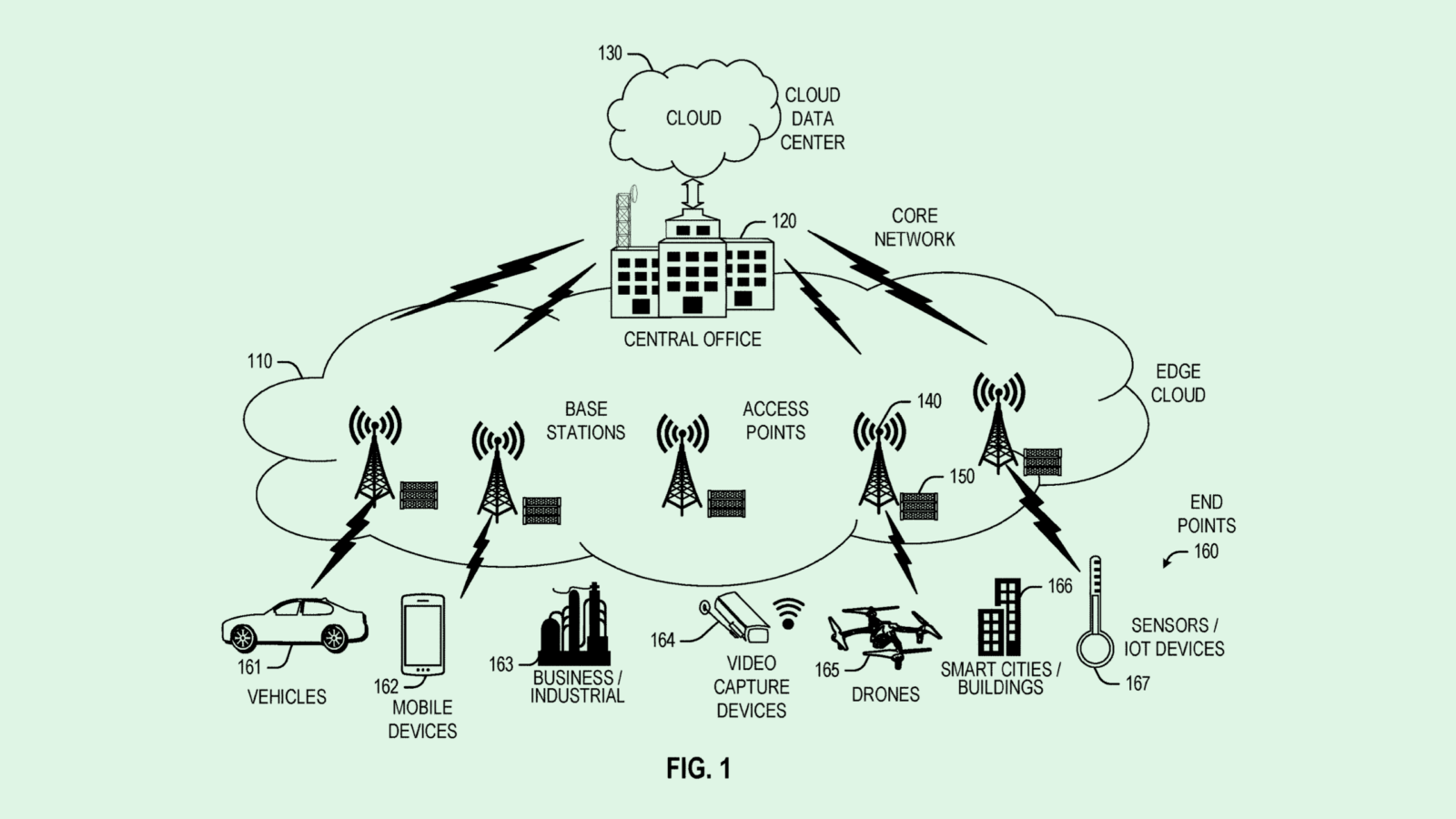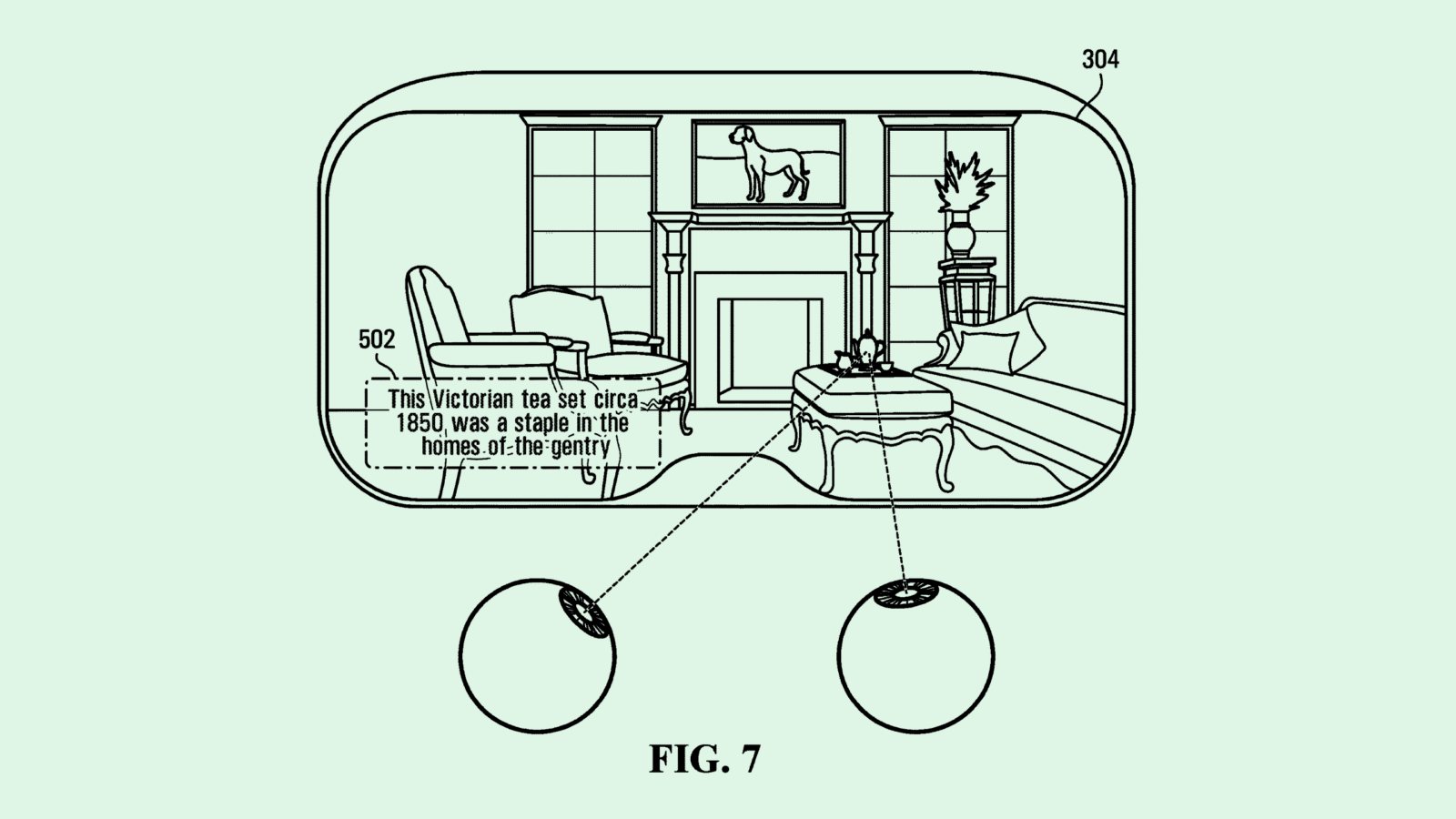Happy Monday, and welcome to Patent Drop!
Today, Intel’s latest patent to clean up data centers could help minimize the climate impacts of tech’s hunger for AI. Plus: Shopify wants to track your depth perception, and Amazon wants to help machine learning models unlearn bad data.
And a quick programming note: As a reminder, Patent Drop will be off Thursday, July 4, in observance of Independence Day.
Let’s take a peek.
Intel Keeps It Clean
As rapid AI development continues to suck up power, Intel wants to try to mitigate as much emission as possible.
The company is seeking to patent a system that would “assign workloads based on emissions estimates.” Intel noted that its goal with this patent is “sustainable computing,” or lessening the environmental impact of large-scale computing, which is an “increasingly relevant practice to address global climate concerns.”
While lots of emissions are created in the process of building and distributing a computing device itself, “a significant portion of the scope 2 and/or scope 3 emissions contributable to a compute device depend on how the compute device is used while in operation,” Intel noted.
The crux of Intel’s patent is essentially proper resource management. The system monitors workload signals from several different edge hardware components; servers in data centers are a likely use case.
These signals help the system figure out emissions estimates, estimated completion time, and memory usage of completing a certain task using that hardware. The emissions estimates may be predicted via a machine learning model, Intel noted, with the primary deciding factor being the ratio of renewable energy sources to non-renewable sources that the utility provider can offer to the task.
The system then assigns tasks accordingly, prioritizing the lowest climate impact in its decision-making, even if doing so sacrifices speed and memory utilization.

If the AI boom tells us anything, it’s that tech firms believe these models can solve pretty much anything. But with all of the solutions that AI promises, its development may be fueling a much larger problem, said Trevor Morgan, senior vice president of operations at OpenDrives. AI training requires a whole lot of computing power. And with the much-needed data centers sucking up 10 to 50 times more energy than the average commercial building in the US, this training sits directly at odds with Big Tech’s climate goals.
Because of this, a major question on the minds of cloud providers and AI developers alike is how to minimize the impact, Morgan said. This patent aims to do so by providing “grid-level assessments” of sustainability, rather than just analysis of the devices themselves. “It’s very nascent, but it is an interesting step in the right direction,” Morgan added.
This patent isn’t only good for sustainability efforts, but could stand to be good marketing for Intel, too, said Morgan. The company lags far behind the likes of Nvidia and AMD in the AI chips space, but could set itself apart by brandishing sustainability as its North Star and positioning themselves as “a company that is very conscious about things other than just making money,” Morgan said.
“It’s that social consciousness angle to the patent that will lead to new business,” he added. “They’re showing that they’re thinking about the longer-term effects … that, I think, is very effective for their marketing and for their public image.”
But AI demand may be outpacing the ability to control energy consumption. As much as tech like this attempts to hone it with clever resource management and timing, a more permanent solution may be creating more green sources of energy broadly: Then, it would be a less pressing task to balance resources at all. “I think everybody wants this to be fixed immediately .. but it will be a long-term journey,” Morgan said.
Shopify Watches Close
Shopify wants to make sure it’s making a good impression.
The tech firm filed a patent application for a “responsive user interface based on gaze depth.” To put it simply, this tech uses artificial reality eye-tracking to change or activate certain virtual objects in a user’s field of view when they’re wearing a headset or pair of glasses, aiming to create a more engaging experience.
“Gaze direction may be used to enhance user interaction,” Shopify said in the filing. “As an example, if the user is looking towards a virtual character rendered on the display, the virtual character may change its facial expression.”
While plenty of tech firms have researched gaze-tracking tech, this patent specifically details a way to track gaze depth to determine focus, as direction alone “might not be indicative of the item at which the user is looking.”
This system uses cameras and optical sensors, such as light detectors, to detect corneal reflections and changes in pupils to track gaze depth. Shopify would then change the user interface based on this data.
For example, if the system notices a user is focusing on a specific virtual object in the background of a scene, it may expand that object and provide more information about it. Or, if it notices the user has adjusted their gaze, it would make that object “less visually prominent.”
Along with creating a more intuitive user experience, this may help ease the issue of eye strain, a common conundrum for AR developers.

Several tech companies that are working on AR tech have sought to patent their own methods of tracking user gaze, including Apple, Microsoft, Meta, and more. The difference between these firms and Shopify, however, is that they all have expansive resources and dedicated hardware roadmaps. Meanwhile, Shopify’s main focus on point-of-sale technology and digital commerce is far from creating its own artificial reality headset.
Shopify has gone after several patents in the augmented reality space to date, including AR shopping, multi-user AR experiences and a merchant photography assistant. Taken together, the filings could signal that it’s preparing for these devices to be much more commonplace, said Jake Maymar, AI strategist at The Glimpse Group.
“Shopify is trying to find the thing they can patent that everyone is going to use,” Maymar said. “It’s kind of like securing their space.”
While this patent focuses just on adjusting user interfaces, sentiment analysis is quickly becoming part of the picture, said Maymar. While the validity of emotion-reading AI is highly controversial, these filings indicate that tech firms see a lot of potential in being able to read the look on your face, Maymar said.
“It makes sense that Shopify would also be interested in this because, ultimately, that’s how they’re going to sell goods,” said Maymar. “It’s a tremendous power that a brand can have by having a positive association.”
However, artificial reality devices collect a ton of user data just in the process of operations, and may feel too close for comfort for some consumers. Though this data can be useful to advertisers, it comes at the expense of user privacy, said Maymar. “Unfortunately, if you want privacy, you’re going to have to actively seek it out.”
Amazon’s AI Reprogramming
Amazon wants its AI models to be able to break bad habits.
The company is seeking to patent “un-learning of training data for machine learning models.” The goal is to essentially remove the influence of specific points of data on a model’s output without having to retrain an entire model from scratch.
Because retraining is often required to remove data influence, “compliance with frequent data removal requests can thus be difficult to satisfy, particularly for smaller companies with limited budgets that rely on large data models,” Amazon said.
Amazon’s tech does this by dividing AI training datasets into “shards,” or subsets of data, and “slices,” which are smaller subsets of the shards. When training a model on this kind of dataset, it’s trained in waves — which Amazon calls “checkpoints” — on each slice and shard.
When a request is made to remove specific data points, the system would pick out the shard and subsequent slice where that data is housed. Those points are then removed from the specific slice. Amazon retrains the model by going back to a checkpoint before the model had been trained on that slice, and retraining it from that point on.
Backtracking in this way saves a ton of time and resources that would otherwise be spent retraining the entire model. This could allow for frequent retraining as a developer discovers inaccuracies or security problems.

Amazon has spent the past year trying to keep up with the rest of tech’s voracious appetite for AI. Along with strengthening the AI within its consumer offerings, such as its reported plans to give Alexa an AI makeover, its last re:Invent conference was filled with AI announcements, including new chips, generative AI tools, and a chatbot. It’s also extended generative AI capabilities to merchants and sellers to assist with ads and listings.
The company’s greater strength, however, is its cloud services dominance. As computing demand continues to rise, so does the demand for cloud computing — an industry in which AWS currently sits at the top. According to CRN, the company held 31% of the global cloud services market share in the first quarter of 2024.
And Amazon has certainly catered to the tech industry’s desires: It launched Amazon Bedrock, its generative AI development suite, last April through AWS. It also invested $4 billion in AI startup Anthropic, a competitor to OpenAI, and made Claude 3.5 Sonnet, the startup’s newest and most powerful AI model yet, generally available to Bedrock customers in mid-June. On a smaller scale, the company also announced a $230 million investment in generative AI startups, with some of the funds going toward its AWS Generative AI Accelerator.
All this said, it makes sense that Amazon would continue to seek IP in faster and more efficient AI training. In the case of this patent, this tech could help models unlearn inaccuracies, biases, and security leaks in a much more resource-efficient fashion. That capability could certainly be a draw to AI developers who don’t have the resources to strip their models down to the screws when they find a mistake.
Extra Drops
- Adobe wants to predict your edits. The company is seeking to patent a way to generate masked regions of user photos using “predicted user intent.”
- Amazon wants to sense when you’re there. The company filed a patent application for “presence detection with dynamic radar operating modes” for its smart home devices.
- Google wants you to strike a pose. The company wants to patent “depth-based 3D human pose detection and tracking.”
What Else is New?
- Apple is reportedly working on bringing AI features to the Vision Pro, though it won’t be launching this year alongside Apple Intelligence on its other devices.
- EU regulators have accused Meta of breaching antitrust rules over its ad-supported subscription service.
- Google is partnering with a BlackRock-backed solar developer to create new solar capacity in Taiwan. Some of this energy will help power its data centers and cloud region.
Patent Drop is written by Nat Rubio-Licht. You can find them on Twitter @natrubio__.
Patent Drop is a publication of The Daily Upside. For any questions or comments, feel free to contact us at patentdrop@thedailyupside.com.
